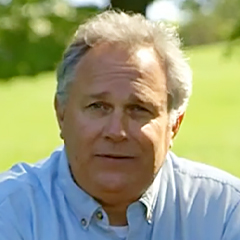
Exposure Tips for Photographing Fall Colors
Layne KennedyExposure in fall photography can create rich, vibrant photos, such as in scenes enveloped by backlight. In this session, you'll see how to work with lighting and exposure to produce stunning results. Photographer Layne Kennedy shares expert tips and techniques on exposure, lighting, composition, and more.
When photographing fall colors, the leaves may look so striking that you may want to just pick up your camera and start shooting the trees. That's fine for simple snapshots, but if you want great fall photos that stand out, you'll want to take a more thoughtful approach. In this session, you'll learn tips and techniques that will help you take advantage of light, exposure, focus, color, and perspective.
Over-Expose to Light Up the Forest
Instructor Layne Kennedy, a seasoned outdoor photographer, takes you out on a jaunt to look for the perfect photo. He finds a grove of maple trees that have wonderful backlight, but that means the front of the trees will be dark. If you go by what the camera tells you, it will generally say the scene is too light and will tell you to under-expose the shot. But, fall colors can be heavy with overexposure, so the photographer should go in the other direction and over-expose, giving the scene a little more light to bring a little more life to the forest.
The contrast of the backlight and the dark tree trunks requires the right composition. If you put the camera on automatic and let it decide all the settings, it will make the shot too dark. You can either use the exposure compensation button or pump up the exposure a stop or two if you shoot manually.
Watch for Flare Amid Backlight
Even if using a lens shade while photographing fall colors, flare can creep into the corners in backlit scenes. You will learn how to avoid glare from shooting into the sun. You'll also see how
you can work with a different composition from your tripod, and shooting both tight and wide to get a variety of shots before moving on to the next photo opportunity.
MORE IN THIS COURSE:
- Season Photography Preview
- Considerations in Spring Photography
- Planning for your Spring Photography Shoot
- Using Backlighting in Photography to Highlight Subjects
- Nature Macro Photography Tutorial: Capturing Blooms
- Choosing Wide Angle or Panoramic
- Considerations in Summer Photography
- Tips and Techniques for Photographing Crowds
- Outdoor Portrait Photography Tips
- Indoor Photography Tips
- Considerations in Fall Photography
- Exposure Tips for Photographing Fall Colors
- Creating Motion
- Tips on Changing Your Perspective in Photography
- Considerations in Winter Photography
- Proper Winter Photography Gear and Equipment
- Clothing for Winter Weather
- How to Photograph Snow: The Importance of Exposure
- Visualizing and Cropping an Image
- Converting an Image to Black and White

